#TestOps
Explore tagged Tumblr posts
Text
The rise of DevOps is transforming software testing by integrating it earlier in the development cycle, increasing test automation, and promoting continuous testing. QA is no longer a separate phase—it's a shared responsibility across teams, powered by collaboration, CI/CD pipelines, and real-time feedback for faster, more reliable releases.
#DevOps#SoftwareTesting#TestAutomation#CI_CD#AgileTesting#QualityAssurance#ShiftLeft#TestOps#ContinuousTesting#DevOpsCulture
0 notes
Text
TestOps, or Test Operations, is a modern approach to streamline and enhance the testing process within DevOps. It involves integrating testing into the DevOps pipeline to ensure quality across development, operations, and testing teams.
0 notes
Text
Names generated from Greek forenames and all possible anagram words from the phrase "Sator Arepo tenet opera rotas"
Aaarataste Acoloe Adoxios Aetratsa Afkois Agdimias Aggelos Aiones Alefthy Alense Alinapters Aline Alios Aliss Amarratter Ambosen Angess Anicos Annios Anoon Anott Ansens Anters Antetrota Antos Apens Aports Appeater Appeer Appests Apreans Aprepason Aproporat Apsoners Arana Areataret Aresra Arikarat Arnes Aronspates Aroters Arreans Artre Aspes Assan Astorent Ateatee Aterot Atort Atoterate Atoulosa Atpos Atrasapots Atteses Caleasort Caler Charoser Chlos Chrios Chroatte Coserreps Covos Crignaters Demet Demis Diaki Diastorrer Diotian Dmicos Docia Drons Eanor Eatents Eatrans Eatter Efthi Einatt Eleki Elidanar Emili Enases Entangele Enteper Entoss Eorys Eretus Eteat Etenes Etrosters Ettee Gelefsia...
Iacharps Ianseatene Ipperres Ipprasten Iriphi Junots Kattes Khars Kolanis Kyroper Lalexiona Lallents Leksia Manoos Manotten Marpon Medamakose Melpocra Menosa Mirios Myris Myroto Nagaton Narappors Nason Naterser Neenosts Nestoe Netetan Nichalian Nioaton Norterios Oanto Oapper Oasimira Odokistas Odona Odosserres Odysilis Onarot Ootters Openatee Opern Opers Opestenets Ophare Oporot Opsterne Oratterr Oregos Orinemmar Orter Orterters Ortone Paearon Pamilia Panasper Paness Panorer Pante Panters Paraters Pareon Pareona Parestera Pareston Parina Parne Parre Parrou Partans Partat Pasorter Patantoo Patates Patimiten Pator Patortars Pattearnes Pattersots Peappasea Pearnos Peepeers Peere Peneetrant Peppea Peptos Perapos Perapper Perentesta Perres Pesses Pestearia Pestenos Petatter Phaddast Phears Phocre Phoukarpas Phoukars Pooers Poone Poopetaps Poopta Popra Poreppons Pornere Porra Porres Portne Portser Postamar Postios Potepsons Poter Poterot Potios Potroterr Ppers Pranda Prapato Praport Prarepor Preanayia Preatot Preer Prenatt Prentoopes Prents Preodios Preper Prera Prerer Prers Pressia Prestesers Prestest Prooper Propara Propea Propers Propetons Prophios Prophotees Propios Prostne Prota Protathon Proterse Protoos Protters Pstao Ptortes Rannioseto Raperis Rappoos Rapposes Raptne Raros Rator Ratortn Ratrot Reareort Reasetes Reens Reera Reessili Renatess Rentaset Renthi Rentote Reona Repars Reper Repers Repotens Repron Reren Rernernae Retents Retrert Rnobia Roarinagat Rodes Roestent Romelosept Romnathia Ronea Roneestres Rooto Roperathi Ropoters Ropten Roptone Rorassteer Roret Rosiosetra Rotapp Roter Rotoors Rotorra Rottoosse Saakos Saorreers Sapora Sappee Sares Sarre Saullida Seasili Seasses Seephiania Senass Senesse Senter Seppe Sereiosers Sereptorta Seronar Serras Seses Sestersons Smakoi Snasoaps Snaspeart Snator Snerateate Snosen Snostos Soape Soase Soast Soopeart Sopeaper Sophainoe Sorna Sorrae Sorsorenis Sosen Sosestar Sosetone Soteas Soteparas Sotina Sotoraters Spantser Spassappes Spast Spatorrers Speess Speno Spers Spida Spooni Spooppos Sporeser Sportes Spres Sproprot Ssorgion Stambos Stantors Stanuilis Stastan Staterigna Stattess Steargios Stena Stenthis Sters Stestas Steter Stonysso Stoon Stopere Storkatess Strena Streprorra Strer Takase Talika Tanagor Tapenis Tapests Tarandrate Taratern Tarini Tarta Tartaresso Tartort Tatat Tateasen Tatees Tatep Tatevasil Tathaikon Tattea Teastarro Teatera Teerapers Tenessers Tepeaste Teponer Ternee Ternsenet Terpens Teste Testops Tetoes Thaioni Thers Thimithara Thones Tinart Tinicala Tiriseanna Tners Toarr Todons Tofania Toree Torne Torser Torters Totopers Totorra Trantes Trappenos Tratas Tratras Tratters Treoner Treress Trettes Troata Tronars Troot Tropeats Troptorns Trotat Trotootets Vanes Xandorgios Xenseats Xents Xyllikla Yagasoto Yaneasens Yangeon Yanosiu Yiose Yitarros Zantenthia
1 note
·
View note
Text
Harnessing the Power of Software Testing and QA Services in 2025
The landscape of software testing and QA services is evolving rapidly. With the surge in technological advancements, businesses face new challenges and opportunities in ensuring software quality. This article explores the latest trends shaping the industry in 2025 and provides actionable insights for QA managers, leads, marketing managers, and project managers to stay ahead of the curve.
1. AI-Driven Testing Revolution

Artificial Intelligence (AI) is transforming software testing processes by enabling smarter, faster, and more efficient testing methodologies. Tools powered by AI can analyze vast datasets, predict potential vulnerabilities, and optimize test cases. For instance, machine learning algorithms help identify patterns and anomalies that would otherwise go unnoticed.
Why It Matters: AI-driven testing reduces the time and cost associated with manual testing while improving accuracy.
Actionable Insight: Invest in AI-enabled testing tools and train your team to leverage their full potential.
2. Shift to Continuous Testing
In the era of Agile and DevOps, continuous testing has become a cornerstone for delivering high-quality software. This approach integrates testing into every stage of the development lifecycle, ensuring real-time feedback and quicker releases.
Why It Matters: Continuous testing ensures bugs are detected early, reducing the risk of costly post-release fixes.
Actionable Insight: Implement continuous testing frameworks and foster collaboration between developers and QA teams.
3. Security Testing Takes Center Stage
As cyber threats grow in complexity, security testing has become more critical than ever. Ensuring robust security measures protects user data and builds trust with customers.
Why It Matters: A single security breach can tarnish your brand’s reputation and result in significant financial losses.
Actionable Insight: Incorporate automated security testing tools into your QA services and conduct regular vulnerability assessments.
4. Automation Advancements
Automation continues to dominate the software testing and QA services domain, with advancements making it more accessible and efficient. Automation tools now support a broader range of applications, including mobile and web testing.
Why It Matters: Automated testing accelerates the testing process and improves overall accuracy.
Actionable Insight: Identify repetitive tasks in your testing process and automate them to save time and resources.
5. The Rise of Performance Engineering
Performance engineering goes beyond traditional performance testing by focusing on the entire system's performance, from architecture to deployment. This holistic approach ensures seamless user experiences even under heavy loads.
Why It Matters: Users expect fast and reliable software; performance engineering ensures you meet these expectations.
Actionable Insight: Integrate performance engineering into your QA services to enhance system reliability and scalability.
6. Test Environment and Data Management
Efficient test environment and data management are becoming crucial as software systems grow in complexity. Virtualization and containerization technologies simplify creating and maintaining test environments.
Why It Matters: Proper test environment management ensures consistent and reliable test results.
Actionable Insight: Adopt virtualization tools and maintain a robust test data management strategy.
7. Emphasis on Accessibility Testing
With growing awareness of inclusivity, accessibility testing ensures software is usable by individuals with disabilities. This aspect not only broadens your user base but also ensures compliance with legal standards.
Why It Matters: Accessible software improves user satisfaction and expands market reach.
Actionable Insight: Incorporate accessibility testing into your QA processes and use tools like screen readers and contrast analyzers.
8. Integration of TestOps
TestOps bridges the gap between testing and operations by focusing on collaboration, communication, and automation across teams. This methodology aligns QA processes with organizational goals.
Why It Matters: TestOps ensures streamlined testing processes and quicker delivery cycles.
Actionable Insight: Establish a TestOps framework to improve collaboration and operational efficiency.
9. Cloud-Based Testing Solutions
Cloud-based testing offers scalability, flexibility, and cost-effectiveness, making it an ideal solution for modern QA services. These solutions support testing across various environments without the need for extensive infrastructure.
Why It Matters: Cloud-based testing enables global teams to collaborate seamlessly.
Actionable Insight: Leverage cloud platforms to enhance your testing capabilities and reduce infrastructure costs.
10. Collaboration Between AI and Human Expertise
While AI plays a significant role in enhancing testing efficiency, human expertise remains indispensable for strategic decision-making and interpreting results.
Why It Matters: Combining AI capabilities with human intuition ensures comprehensive testing coverage.
Actionable Insight: Foster a culture where AI tools complement human testers rather than replace them.
Conclusion
The future of software testing and QA services is bright, driven by innovations like AI, automation, and performance engineering. By staying informed about these trends and adapting to them proactively, QA managers, leads, and other stakeholders can ensure their software meets the highest quality standards. Remember, embracing these advancements is not just about staying competitive—it’s about leading the way in an ever-evolving industry.
Call to Action
Are you ready to transform your software testing and QA services? Contact us today to learn how we can help you stay ahead in 2025 and beyond!
#software quality assurance companies#software testing and quality assurance#quality assurance services company#quality assurance services#quality assurance companies
0 notes
Text
Softweb Solutions offers advanced AI-powered software testing services designed to boost competitive advantage. By leveraging AI in test automation, performance testing, API testing, TestOps, IoT testing, manual testing, and security testing, Softweb ensures faster time-to-market, reduced costs, and superior software quality. The company uses a wide range of cutting-edge tools and technologies to provide comprehensive QA automation services across the entire software development life cycle.
0 notes
Text
Is your Software Ready for the Next Build?
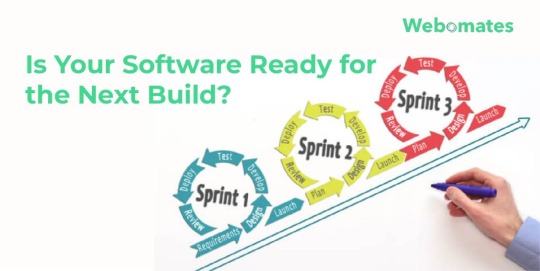
The Need for Speed: Ensuring Agility with Incremental Release
In a quest to deliver features faster, achieve higher flexibility, better satisfy customer requirements and overhaul competition, organizations are breaking through the barriers of traditional software development processes like Waterfall model, and instead taking the Agile DevOps path which is both iterative and incremental. Thus, there is a huge emphasis on shipping software faster.
This transformational journey involves removal of silos between the development, testing and operations teams, and applying shift left principles. Does this mean that we can achieve Zero Production defects? Though a fairytale dream of every organization, the Lean Software Development: An Agile Toolkit quotes:
“One of the fastest ways to kill motivation is what is called in the US Army a zero defects mentality. A zero defects mentality is an atmosphere that tolerates absolutely no mistakes; perfection is required down to the smallest detail. The army considers a zero defects mentality to be a serious leadership problem, because it kills the initiative necessary for success on a battlefield” — Mary & Tom Poppendieck
Thus, instead of “zero defects”, the agile organizations are all about continuous planning, continuous testing, continuous integration with ‘continuous’ being the focal area.
Integrating Software Testing in your Incremental Release
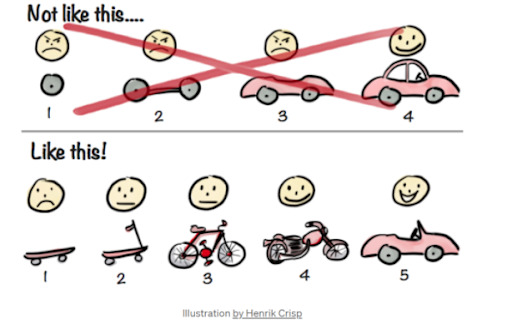
But, how do you know if your incremental build is ready?
Delivering software incrementally necessitates the Development and QA teams to work collaboratively to deliver a build. Though the nuances of day-to-day operations may vary from organization to organization, the teams adhere to the same core tenets to ensure incremental release — Continuous Integration, Continuous Delivery, and Continuous Deployment. The objective is to get feedback to the developers earlier & faster to help isolate issues enabling reliable and frequent delivery of code changes.
How we Do It @ Webomates CQ
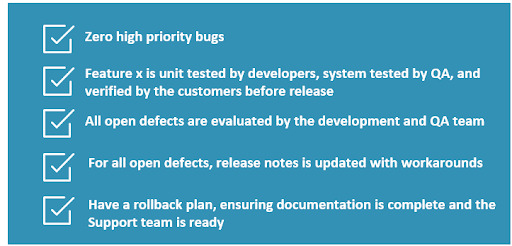
TestOps — The Webomates advantage
With its patented tools — Webomates CQ along with AI Defect Predictor tool, Webomates ensures that for a build with release notes, all committed test cases on all browser/smartphone/tablet will be executed in the committed time. This remains true regardless of software builds that modify features, defect fixes that modify test cases/scripts, and automation timeout errors. Webomates is fully configurable to the needs of the application and the Development Teams exhibiting agility in scaling up its testing services based on the changing requirements.
Ability to Speedily Test build in Dev, Pre-Prod & Prod:
As per the scope of the build, Webomates has the agility to perform verification using CI/CD, Overnight or Full regression. It shortens the regression cycle from weeks to hours.
CI/CD — 15 mins to 1 hour
Overnight with Exploratory — 8 hours
Full with Exploratory — 24 hours
Execute Smoke Testing, Overnight and Full Regression testing
With an aim to detect major problems early in the cycle, Webomates conducts Smoke testing to expose any integration issues. Webomates helps you to scale up by getting the build checks done via various regression services like mini/Smoke test suites in Developer environments, Overnight modular test suites at lower environments like integration and FULL in staging/Production environments as per requirements.
Implement regression testing with Shift-Left approach
With the power combination of Webomates regression testing with Shift-left approach, defects are quickly identified and fixed in the staging environment itself. You start with UI testing and API testing but with Smoke suites targeting the area that the developer is working on. As the features develop, then move on to module, integration and regression testing. If the module fails, there is no point for an integration test. The developers need to go back to the module and fix it before moving on. You do not wait till the end of the lifecycle to test the entire product.
Up-to-date Test Package
As the full regressions and modular tests include healing of the test cases and test scripts for modified features, Webomates ensures that the Test Package is updated with the new behavior of the software release.
Real-time results and analysis
To address the thousands of hours lost by QA professionals, Webomates created its patented AI Defect Predictor tool and shared true Pass and true Fail reports with the development team along with an in-depth analysis of automation failures. This AI Defect Predictor is provided to the development and QA teams that use CI/CD service to help them reduce their triage time.
For 300 test cases with a failure rate of 35% (105 failed test cases), it usually takes 12 hours to triage the results and identify the false positives. Using the Defect Predictor, the time taken drastically reduces to 2–3 hours.
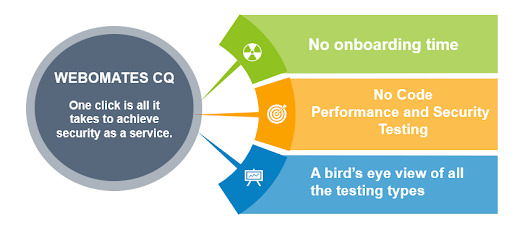
Conclusion:
For every incremental build, Webomates CQ can create, execute, maintain, analyze test cases and generate defects for browsers, mobile, Windows and API applications. Exact state of the system in terms of bugs is known after every check in.
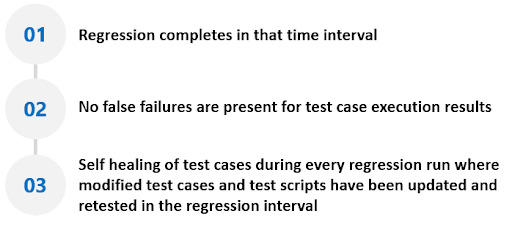
With such stringent code quality checks, the defects are detected at an early stage hence are easier to fix, ultimately resulting in improved code quality and timely delivery of the product. Read our articles on Shift Left Testing in Agile and Skip Security Testing at your own risk to understand how Webomates can helpWith the power combination of Webomates regression testing with you in building a good product where UI, API, Load, and Security are not left out to be tested as a different component at the end. If you are interested in learning more about Webomates’ CQ service please click here and schedule a demo, or reach out to us at [email protected]
1 note
·
View note
Text
How TestOps Enhances DevOps and Software Development
http://i.securitythinkingcap.com/Srmgvd
0 notes
Link
#testing-trend-testops#testops#testing-software#test-automation-framework#codeless-automation#Future-Testing#Test-automation#Customer-Experience
0 notes
Text
De”Code”-ing Automation Testing…

Over the years, the role of software testing has gained a prominent place in SDLC. The major shift towards Agile & DevOps development methodologies has expedited adoption of Test Automation strategies to bring-in speed to meet the quick go to market strategies. Software testing until last two decades was a simple exercise which was performed manually. However, it has become more complex now owing to the emergence of new technologies, platforms, browsers, devices and new development methodologies. Companies in order to meet these complex software testing requirements and to reduce their overall cost and maintenance of test cycles have realized the need to replace their traditional testing approach with Test Automation. But then considering the need of agility and to reduce the dependencies on programming skills from Testers, and to improve the communication between technical and non-technical teams (Business Analysts), slowly Behavior-Driven Development (BDD) evolved from Test-Driven Development (TDD). Writing test cases in a common language led to collaboration efficiency. This increased the demand for Codeless Automation, making it more popular approach.
Codeless Automation – 101
Codeless Automation means automating your tests without really having any knowledge of coding. Testers can visually create automated tests using a drag and drop interface, and run them on multiple browsers and work environments, simultaneously. Some of the popular tools are developed on top of open source solution, Selenium and will require zero effort from the QA team, integrates with the third-party applications, makes building test cases easier than before, monitors your web page performance and will cost less than hiring a manual tester. A few examples are Katalon Studio, CloudQA, Leapwork, Tosca, Perfecto, Mabl, Usetrace, etc.
For QA teams, Codeless Automation reduces the complexity of writing test scripts, so they can create and execute fully automated test scenarios without coding. For developers, Codeless Automation testing makes test creation and execution substantially faster thereby saving time and focus more on product development and innovation. If automating a test case using Selenium takes a minimum of 6 hours, whereas with Codeless Automation may take only an hour. In addition, some of the Codeless testing tools use AI / ML for automated error classification, self-healing, etc making it the future in DevOps environments.
Codeless Automation workings – how?
Codeless Automation Testing can work on different approaches. The most commonly used are the record and play and creating structured test flow diagrams using drag and drop interface. The testers can edit the scripts created by the tool to best suit their requirements. This enables them to meet the shorter time to market goal.
Codeless Automation Testing Tools:
CloudQA: Easy to use cloud-based tool for creating tests using a visual editor which creates an easily maintainable dynamic test model. With record & playback option, it records the tests and captures all the actions during site navigation. It also enables running tests in parallel across browsers. With high test coverage, it supports data driven testing. It facilitates reuse of test scripts for load testing and synthetic monitoring.
Tricentis Tosca: It is an enterprise grade continuous testing platform that provides no-code approach for end to end test automation. With support for more than 160+ technologies, Tosca provides robust test automation capabilities with maximum test coverage at ease. Leveraging their AI-driven model-based testing platform, one can accelerate the testing cycle and eliminate the challenges of test automation solutions which relay on strong programming skills.
Katalon Studio: It is known for generating tests automatically. Its recorder facilitates recording tester`s actions on web or mobile application and creates the test scripts. It has built-in framework and predefined test methods to accelerate seamless test script development. With self-healing support backed by AI, it provides capabilities for easy test maintenance. Katalon Studio supports web, mobile and Desktop applications.
Perfecto: It is a cloud-based solution with record and playback ability and built-in integrations to several popular CI servers. It offers a high-speed infrastructure and comprehensive reporting dashboard that is accessible across geographies. It provides scalable solution by having seamless integration to Selenium Grid. It offers ML capabilities to address the object maintenance issues in the test scripts.
Selenium IDE: It is one of the most commonly used record and playback automation testing tool. The test scripts created can be exported to Selenium WebDriver for test execution. The tool can be extended through plugins.
LeapWork: It is one of the popular solution for no-code test automation enabled by their visual language of flowcharts. With simple, visual building blocks, data driven tests or end to end UI test cases can be created maximizing the test coverage. With intuitive management features and straight forward integration with CI/CD pipeline, it works across all technologies.
Not just limited to these tools, there are several other popular Codeless test automation tools like Ranorex, SimplifyQA, AutonomiIQ, etc available in the market. Codeless test automation being the future to improve test efficiency, reusability, maintainability and agility, there is a substantial increase in the new codeless test automation tools in the market, every day.
Key benefits of Codeless Automation:
The main benefit of Codeless Automation is self-maintenance. Using Artificial Intelligence powered technology which eliminates maintenance time and cost as it automatically monitors changes in the code. It creates a dynamic test model that can be easily updated to reflect the changes. Codeless Testing leverages Machine Learning to self-correct object maintenance issues within code, saving time and cost. Codeless Testing on Cloud allows the team to meet its speed, scalability and collaboration needs throughout the software development life cycle (SDLC). Increased reusability and test coverage make it the best candidate for Agile and DevOps environments.
The Future of Codeless Automation:
Test automation for sure will help in accelerating regression testing, reduction in repetitive testing efforts, but codeless test automation will ensure that we achieve the desired results faster. Codeless test automation is simpler, smarter and better way to automate and drive expected ROI. Care should be taken to identify the right codeless automation tool that supports the technology in which the application is built and make sure it comes with all the required features like cross-browser compatibility, integration with different bug tracking tools, multilingual support, scheduler, etc. that ensures reliable and efficient test automation.
#qa#testing#automationtesting#codelesstesting#performancetesting#userexperiencetesting#devops#CICD#Cloud#API#Agile#AI#ML#GUI#Testops#scripts#record-and-Play#Tricentis#tosca
0 notes
Photo

#carlourbani #mestrailenia #libroperbambinienonsolo #testoper lescuoleprimarie (presso Recanati) https://www.instagram.com/p/B8Dq5aDofZV/?igshid=1tjj8drkdtnkb
0 notes
Text
Is your cloud app ready to meet the FDA's Data Integrity and Compliance expectations?
Background
FDA released its final guidance on “Data Integrity and Compliance with Drug cGMP” in December 2018. The main purpose of this guidance was to clarify the role of data integrity in current good manufacturing practice (cGMP). This guidance provides the Agency’s current thinking on the creation and handling of data in accordance with cGMP requirements.
I wrote a blog post based on the DRAFT guidance in 2017. This post is a followup post based on the final guidance.
Why is this guidance important?
"In recent years, FDA has increasingly observed cGMP violations involving data integrity during cGMP inspections. This is troubling because ensuring data integrity is an important component of industry’s responsibility to ensure the safety, efficacy, and quality of drugs, and of FDA’s ability to protect the public health. These data integrity-related CGMP violations have led to numerous regulatory actions, including warning letters, import alerts, and consent decrees." -- Data Integrity & Compliance with Drug cGMP - FDA Final Guidance
If you are using a cloud app to manage any GxP function, understanding the current thinking within the FDA is of paramount importance for ensuring regulatory compliance. The expectations of the FDA to ensure data integrity will impact:
Cloud App Design & Implementation
Validation
User Access Controls
Segregation of Duties
Audit Trail / Electronic Signature Implementation
Data Backup, Archiving & Retention
Disaster Recovery & Business Continuity (BCP)
Ongoing Validation & Maintenance
Audit Trail Reviews
What Questions Do You Need to Ask to Ensure Cloud App Compliance?
Am I prepared to keep my Cloud App in a “Validated State” considering the frequency of changes not just at the SaaS level but also at the IaaS/PaaS levels?
Do I have a robust validation process to ensure my Cloud App stays validated in spite of the frequent patches and new releases?
Can I unequivocally state that my cloud app validation meets the current FDA requirements for data integrity?
Do I have a process not to just validate the audit trail transactions but review them per current FDA expectations?
Cloud App Validation Strategies for Data Integrity
"Firms should implement meaningful and effective strategies to manage their data integrity risks based on their process understanding and knowledge management of technologies and business models." -- Data Integrity & Compliance with Drug cGMP - FDA Final Guidance
Your validation strategy needs to provide assurance that the intended use of the app is met on a “continuous” basis. You need to take a risk based approach to ensure the intended use is not just met during initial validation but continues to meet through the myriad of patches and releases. To ensure data integrity your program must validate that the historical data can be retrieved without any compromises. In addition, your program must ensure that the audit trail transactions function as expected and there is a process for scheduled reviews.
xLM TestOps Framework for FDA Data Integrity Compliance
xLM’s TestOps managed service is designed to meet the FDA’s Data Integrity guidance in the context of cloud app validation. TestOps framework is based on “continuous validation” which is specially designed for GxP compliance in the cloud. Here is how it works:
TestOps is a modern framework based on software test automation. It provides end to end automated validation for any cloud app. The initial validation package is purposefully built for your instance based on your intended use. Read more…
Validation runs can be scheduled or run on-demand (for example: when a patch is released). During any of these subsequent runs, the intended use is not only affirmed but also the integrity of historical data is confirmed.
During the above steps, the audit trail and e-sig transactions are validated for all critical GxP functions.
A Big Data/AI based audit trail log analysis system automates the “scheduled” reviews.
Conclusion
FDA mandates that the “system design and controls should enable easy detection of errors, missions, and aberrant results throughout the data’s life cycle” to ensure data integrity. xLM TestOps managed service is designed to ensure data integrity by leveraging its “continuous validation” framework. It ensures your intended use is met on an ongoing basis while always checking for data integrity. Its focus on audit trail validation as well as automated reviews positions itself as premier service that can ensure your data integrity in the cloud.
0 notes
Link
TestOnNeed for Entrepreneurs, Startups and Enterprises.
To read more click the link
0 notes
Text
Is TestOps the Future of Software Testing?
http://i.securitythinkingcap.com/SlzJ8K
0 notes
Link
0 notes